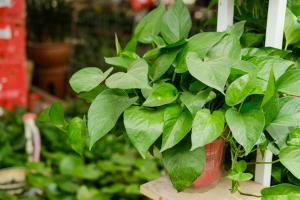How to Prune Small Palm Trees Plants
Pruning small palm trees is essential to keep them looking attractive and healthy. However, pruning them incorrectly can cause damage to the plant. If done the right way, pruning can help promote growth, remove pests, and protect the plant from diseases. Here are some tips on how to prune small palm tree plants.
1. Identify Dead or Damaged Fronds
The first step to pruning a palm tree is to identify dead or damaged fronds. These are the brown or yellow leaves that are no longer attached to the stem. These fronds should be removed first, as they are not contributing to the health of the tree, and they can be a haven for pests and disease.
2. Avoid Over-Pruning
It is important not to over-prune a palm tree, as this can lead to stunted growth, decreased resistance to diseases or pests, or even death of the tree. Only remove the necessary fronds, depending on the visual or functional needs of the tree
3. Sterilize Your Tools
Before pruning your palm tree, be sure to sterilize your tools. This will help prevent the spread of disease and ensure that your tools are clean and sharp. You can sterilize your tools by wiping them with rubbing alcohol or a household disinfectant.
4. Prune Strategically
When pruning, it is important to strategically remove fronds. Remove the lowest fronds first, as they are the oldest and the lowest functions to contribute to the plant. Selectively prune the middle layer of fronds to provide a clear view, air circulation, or reduce wind drag but without removing too many leaves that could cause sunburn to the trunk. Avoid removing all the leaves at the top of the tree, as this can damage the terminal bud, which is responsible for producing new growth.
5. Don’t Prune Too Often
Pruning small palm trees too often can weaken the plant, so it is important to wait until they have enough time to replenish their nutrient reserves before pruning again. This can be anywhere from six months to a year, depending on the variety, location, and soil conditions.
6. Cut at the Right Place
When pruning a palm tree, always make sure you cut at the right place. The frond should be cut flush with the trunk, without leaving a stub. Leaving a stub can lead to an entry point for pests or disease and can also cause unsightly brown spots on the trunk as the wound tries to heal.
In Conclusion
Pruning small palm trees doesn't need to be daunting if you follow the steps outlined above. Identifying dead or damaged fronds, sterilizing your tools, and strategically pruning is the key to promoting healthy growth and protecting your tree from pests or disease. By taking care of your small palm tree plants, they will remain beautiful and healthy for years to come!

 how many times do yo...
how many times do yo... how many planted tre...
how many planted tre... how many pine trees ...
how many pine trees ... how many pecan trees...
how many pecan trees... how many plants comp...
how many plants comp... how many plants can ...
how many plants can ... how many plants and ...
how many plants and ... how many pepper plan...
how many pepper plan...





























